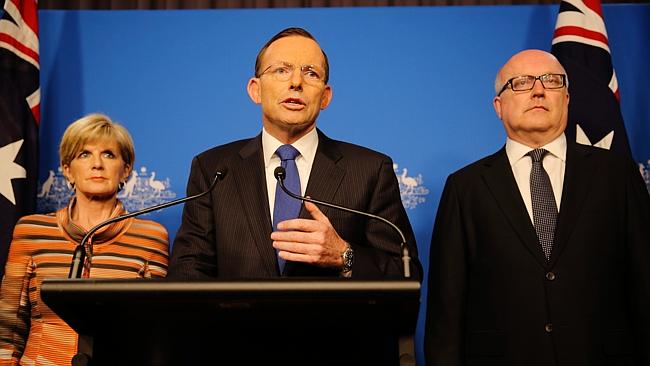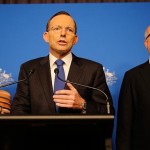
Last week wasn’t a good one for the Australian government. From Prime Minister Tony Abbott’s announcement that the government was abandoning its attempts to repeal section 18C of the Racial Discrimination Act in favour of getting everyone to join Team Australia in fighting off domestic terrorism, to a circular and confusing explanation of what information about your web browsing will be collected and stored by ISPs, and then finally a debate about whether abortion causes cancer. This is one week of performances that the government will surely want to forget. Although Malcolm Turnbull did put in a valiant effort on Friday morning attempting to clean things up.
But in amongst these spectacular fizzles of policy development there are communication lessons for business leaders everywhere. Several lessons, actually.
Get your facts straight
“Well, uh—the uh—my my my…the…what you’re viewing on the internet is not what we’re interested in.”
—Attorney-General George Brandis, trying to explain what online metadata would be retained by ISPs under new government policy
George Brandis clearly had no idea what he was talking about when he sat across from David Speers and fumbled his way through explaining what information would be retained by ISPs under the government’s new policy. It’s painful to watch.
Not only that, but Tony Abbott and George Brandis gave two differing accounts of what the government was interested in with the policy.
When you have different representatives of the same organisation telling you different things, that’s bound to confuse any audience. Get your facts straight before any major communications initiative by developing a communications plan that can get everyone on the same page.
Be clear who your stakeholders are
“I had a conversation with Andrew Bolt yesterday and I explained it was off the table, I knew he would be disappointed.”
—Tony Abbott, explaining he called Bolt personally to tell him the government was backing down on repealing section 18C of the Racial Discrimination Act.
A significant volume of commentary makes the case that the government’s attempts to repeal Section 18C of the Racial Discrimination Act were primarily driven by a desire to make sure the successful prosecution of conservative newspaper columnist Andrew Bolt under that very clause in 2011 would never happen again.
If that were true, then perhaps it makes sense that Tony Abbott phoned Andrew Bolt before he told the Australian public about the change to government policy. But if instead the repeal were driven by a clear belief that removing the part of section 18C—which makes it illegal to offend others with racially divisive speech—was in the best interests of the Australian people, surely the first people to know should be those who were going to be most affected: the citizens of our fine country.
Instead, Andrew Bolt revealed the backdown on his blog before the government had made its announcement.
To make sure you understand who it is you need to call first when you have something to say, construct a stakeholder management plan.
Find someone who knows what they’re talking about
“Well, he sounded like an adult, who knew what he was talking about, and that’s the first evidence we’ve had of that in the last couple of days.”
—Barrie Cassidy, referring to Malcolm Turnbull trying to clear up confusion about the government’s plans to retain metadata generated by internet browsing.
Perhaps the most perplexing decision of this entire week has been the government releasing what they are currently calling an ‘in principle’ decision to retain metadata, without the involvement of Malcolm Turnbull, the Minister for Communications. Turnbull is consistently one of the government’s best performers when it comes to fronting the media, and he has been the only one in the last week that seemed to have a clue about what an IP address was. (Someone should perhaps tell Senator Brandis.)
Consider for instance the way in which, in this interview, Michael Brissenden leads with a question about Turnbull’s alleged opposition to the changes, and Turnbull simply goes straight to the heart of what the public really needs to know about the proposal.
Turnbull knows his stuff on this issue. If George Brandis didn’t, why on earth was he fronting an interview on the topic? It’s not hard to appoint a spokesperson. It’s not hard to drill yourself on specific details. If you can’t, bring someone with you who does know what they’re talking about, who can deal with those questions.
Which still leaves one big query in my mind.
How did any of this happen?
MIA FREEDMAN: what about the fact that one of the speakers at this conference promotes the factually incorrect statement that abortion leads to breast cancer. Do you believe that?
ERIC ABETZ: I think the studies—and I think they date back from the 1950s—assert that there is a link between abortion and breast cancer.
MIA FREEDMAN: (interrupts) It’s conclusively and scientifically incorrect…
—Eric Abetz and Mia Freedman exchanging views on The Project
If sending George Brandis out alone to talk to David Speers about metadata and IP addresses was perplexing, this is just car crash television.
Senator Abetz has since said that he was interrupted and wasn’t able to explain that he doesn’t himself believe that this is the case, but this is where the biggest lesson of all comes in:
Effective communication is the responsibility of the sender.
Senator Abetz could easily have defused the whole situation by following up the interruption with a clarification—a simple direct statement along the lines of “as I was saying, while these studies show the link you mention, I believe that modern medicine has come a long way since then and that as you say, the link has since been proven false.”
Then he could easily have gone on to address the substance of Ms. Freedman’s enquiry, which related to the appearance of government ministers at the pro-life World Congress of Families event, and whether that lent credibility to the views being presented there—among which were the abovementioned link between abortion and breast cancer.
Instead, he left his position uncertain and invited the media feeding frenzy of the following morning.
This lesson is so important that it bears repeating—and in capitals this time, in case you’ve fallen asleep:
EFFECTIVE COMMUNICATION IS THE RESPONSIBILITY OF THE SENDER.
It doesn’t matter whether you think people are incapable of understanding the message you want to give them—you have to find a way. If you think it’s going to be hit-and-miss to reach people using an announcement on the intranet, then find alternatives. Get creative with your solutions. Go beyond printing a few mouse mats with motivational slogans on them, and build a coherent, structured, incisive programme of communications that forces everyone to sit up and take notice, and that takes into account the many and varied ways in which individuals already consume information.
I can tell you that most of them probably aren’t reading your project update emails. They might even delete them without reading them, the cads.
But it’s up to you to find the best way to reach them. And if you ever find yourself thinking something like “yeah, they didn’t come along on the journey, but there are always some recalcitrants” or “honestly, I don’t know how they even got that from what I said, they must be dense” or my personal favourite “clearly, they just don’t know how this works” (because really, whose job is it to tell them?) then come back here and read this one more time:
EFFECTIVE COMMUNICATION IS THE RESPONSIBILITY OF THE SENDER.
All right, go start working on your comms plan, or I’ll ask Sarah Ferguson to pay you a visit to teach you some communication lessons. If you don’t think that’s a threat, have a look at Joe Hockey’s face after her first question in this interview.






